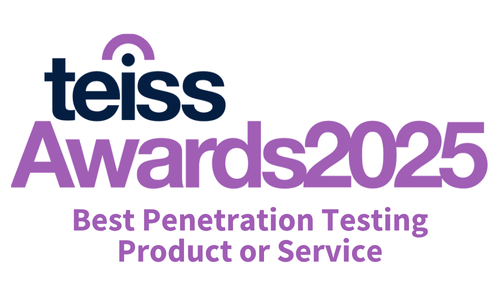
Mobile Application Penetration Testing
Safeguard your mobile applications with LRQA’s thorough penetration testing, ensuring robust security and resilience against evolving cyber threats
Safeguard your mobile applications against evolving cyber security threats
The widespread use of mobile applications in today’s digital landscape exposes organisations to significant security risks. As cyber threats evolve, ensuring the security of your mobile applications is critical to safeguarding sensitive data and maintaining user trust. LRQA’s Mobile Application Penetration Testing services are designed to identify and address vulnerabilities within your mobile apps, providing you with the assurance that your applications are secure against potential cyber-attacks.
Increasingly, mobile applications are the default way that users interact with mobile devices. Applications bring rich and native functionality to a mobile device in a way that exceeds what is generally possible with a web application. The increased prevalence of mobile applications has resulted in increased levels of personal data and sensitive functionality being handled by them.
Mobile app penetration testing reveals vulnerabilities in the cyber security posture of a mobile application. Most commonly, it is the safety and security of iOS and Android applications that requires assessment.It is important for both developers and consumers of mobile applications, that appropriate levels of security exist. This is especially the case for applications that handle sensitive data and functionality.
Our Mobile Application Penetration Testing Services
Our expert cyber security team employs advanced testing techniques to simulate real-world attack scenarios, uncovering weaknesses before they can be exploited by malicious actors. Whether your mobile application is in development or already deployed, our penetration testing services will help you enhance security measures and ensure compliance with industry standards.
![]()
Dynamic application security testing (DAST)
Analyse your application in its running state to detect security vulnerabilities that could be exploited in real-world attacks.
![]()
Static application security testing (SAST)
Review your application’s source code to identify potential security flaws at the code level, ensuring vulnerabilities are mitigated before deployment.
![]()
Reverse engineering
Assess your mobile application for weaknesses that can be discovered by reverse engineering, such as decompilation or analysis of the binary code.
![]()
API security testing
Evaluate the security of Application Programming Interfaces (APIs) that your mobile app communicates with, ensuring that data exchanges are secure and not exposed to threats.
Award-winning expertise
Our cyber security team continues to achieve multiple vendor certifications, highly respected industry accreditations and international accolades, demonstrating the breadth, depth and impact of their services.


Benefits of Mobile Application Penetration Testing
A high-quality mobile application penetration test tells you what a mobile application is doing right and what it is doing wrong in terms of its cyber security posture.
Many groups benefit from a mobile application penetration test:
- Developers gain assurance that their product is safe and secure.
- Organisations gain assurance that a mobile application is safe to introduce to their enterprise environment.
- Users feel safer with the knowledge that a mobile application security test has taken place, which in turn allows them to confidently use the application.
Our approach to mobile application penetration testing
Our Mobile App Penetration Testing is conducted by experts following a rigorous methodology to determine the overall security posture of your application. These experts replicate the threat posed by an array of threat actors of all sophistication levels. We determine the resilience level of your mobile application.
Where security gaps are identified, we advise you in easy-to-understand terms that detail, what the impact is and how to remediate the problem. Where we find positive security controls, an in-depth mobile application penetration test will tell you about that, too, so that you can keep on doing those things. Ensuring the confidentiality, integrity, and availability of a system and its data is crucial for mobile applications. Mobile application penetration testing plays a vital role in uncovering vulnerabilities and strengths in cyber security measures.
The OWASP Foundation highlights ten common weaknesses in mobile apps, which are thoroughly scrutinised during penetration testing, along with other potential vulnerabilities:
• M1: Improper credential usage: Most mobile applications have some form of user account or authentication and need to store sessions and credentials securely. Misconfigurations, hardcoding and insecure storage of secrets can all result in attackers gaining access to user accounts and data.
• M2: Inadequate supply chain security: Nearly all modern software is not built completely from scratch but relies on a plethora of third-party libraries and existing frameworks. These can introduce security weaknesses into the application, resulting in official builds being shipped with known vulnerabilities.
• M3: Insecure authentication/authorisation: In addition to the usual API authentication using usernames and passwords, mobile applications have access to a wider range of authentication and authorisation methods, including biometrics. This exposes a wider attack surface compared to traditional web applications where a failure to secure these methods can result in unauthorised access to data and functions.
• M4: Insufficient input/output validation: Mobile applications can be vulnerable to a whole host of vulnerabilities from SQL injection to Remote Code Execution through insecure deserialisation. This makes it imperative that all input and output are properly sanitised, filtered and validated before being used.
• M5: Insecure communication: Any data transmitted and received by mobile applications has to be over secure and encrypted channels using the latest recommended secure protocols to prevent eavesdroppers from intercepting sensitive information. More sensitive applications such as banking and healthcare apps will also need to implement measures such as TLS certificate pinning to ensure that the application’s transport security is not compromised if running in an insecure environment.
• M6: Inadequate privacy controls: The ubiquity of mobile devices and their use for highly sensitive purposes means that PII must be well-protected against both external threats as well as potential threats in the mobile environment: a widely exploitable failure on this front can result in data breaches that cause reputational damage and harm users.
• M7: Insufficient binary protections: Even if an application has a secure configuration, it can still be reverse-engineered and modified by an attacker to disable these. It may also be possible to debug and dynamically analyse the application while it is running to modify its behaviour. Preventing these kinds of attacks using obfuscation and anti-tampering mechanisms is vital for sensitive applications that handle important functions and data.
• M8: Security misconfiguration: While both Android and iOS have many security measures that are available to applications, these must be enabled and taken advantage of by deploying secure configurations.
• M9: Insecure data storage: Application data can be stored in several locations from devices’ internal storage and external SD cards to keychains and keystores. These locations all have various trade-offs when it comes to convenience and security, and choosing the wrong option can result in there being a risk that user data can be compromised by an attacker.
• M10: Insufficient cryptography: Mobile applications often employ cryptography to protect confidential information from other applications on the device. The cryptographic methods and libraries used must be deployed securely and it must be ensured that only secure algorithms are relied on to protect data.
This list is not comprehensive, but it offers insight into the range of vulnerabilities that can surface in a mobile application during penetration testing.
Why work with us?
Specialist expertise
Our cyber security experts hold multiple vendor certifications and accreditations as well as highly respected industry accreditations from CREST, the PCI SSC, ISC2, BCI, Chartered Institute of IT, and NCSC CHECK.

Industry leadership
We lead and shape industry on advisory boards and councils including the PCI SSC Global Executive Assessor Roundtable and CREST councils in the Americas, Asia, EMEA and the UK. We are certified by a range of governing bodies including the payment card industry and are approved as a Qualified Security Assessor.

Everywhere you are
Operating in over 55 countries, with more than 250 dedicated cyber security specialists and over 300 highly qualified information security auditors across the world, we can provide a local service with a globally consistent dedication to excellence.

Award winners
We have been recognised for the breadth and depth of our services – including the TEISS Award for Best Penetration Testing Service in 2024, Enterprise Threat Detection and Cloud Security awards at the Security Excellence Awards 2024 and the Stratus Award for Best Managed Cloud Security Service.

Partner with LRQA
• We have penetration testers that specialise in different disciplines. You will always get one or more testers that specialise in mobile application security specifically.
• We take the time to understand your organisation, your objectives and your primary security concerns. We conduct your mobile application penetration test with those aims at the forefront of our minds.
• We provide a penetration test, not a vulnerability scan. The core value of our mobile application penetration tests is our experts think like attackers and manually assess your mobile application. We will establish rules of engagement and then, within those rules, demonstrate the impact of a vulnerability by fully exploiting it.
• We provide a highly consultative service. We are not a black box where a scope enters, and a report exits. The entire process is communicative and consultative. We pride ourselves on keeping our clients in the loop throughout the entire process.
• We report in a flexible and easy-to-understand way. You receive a management report which speaks in terms of business risk, and a technical report which goes into more detail – including clear impact statements, a description of exploitation, clear reproduction instructions, and customised remediation advice.
• We offer executive and technical debriefs for every single mobile application penetration test we conduct. Our penetration testers are trained to be able to speak in both technical and business terms.
Frequently Asked Questions
What is your lead time for a mobile application penetration test?
We have a team of expert mobile application penetration testers and they are always in demand. We match internal training and recruitment with external demand as efficiently as possible. We aim to be able to commence mobile application penetration tests within two weeks. Where there is urgency, we can discuss meeting your deadlines.
How long does a mobile application penetration test take?
The length of a mobile test very much depends on the complexity of your requirement and the level of assurance you require. Most mobile tests are at least three days per application. We are providing a manual penetration testing service rather than an automated scan. Speak to one of our experts to get a bespoke proposal for your mobile application test.
What is your mobile application penetration testing methodology?
Our mobile testing methodology follows the key phases of reconnaissance, enumeration, discovery, exploitation and post-exploitation. We do use automated tools in places to achieve breadth of coverage, but most of the value comes from manual penetration testing. Here, we provide depth of coverage and it is what we spend most of our time doing. We are happy to provide more detailed information on request.
How will you tell me what the findings of my mobile application penetration test are?
We are communicative and consultative. During the engagement, we periodically update you with the findings so far – both positive and negative. Where we identify critical severity flaws, we will let you know immediately, and follow up in writing. At the end of the engagement, you will receive a summary of all findings. By the time you receive your in-depth reports, you will have no surprises: we communicate as we go. After the delivery of the reports, we are more than happy to give you technical and executive-level debriefs. Finally, you have full access to our team of mobile application penetration testers after the engagement has been completed. We are here to answer any security questions you may have in the future.
Will you help me to remediate vulnerabilities identified during the penetration test?
Our team of mobile application testers understand how to build applications, as well as how to break them. We will give you custom remediation guidance for every vulnerability that we identify during the test. If you have constraints, we will work with you to understand those and propose an appropriate solution to any given vulnerability.
The world leader in CREST accreditations
We are proud to be the only organisation in the world with a full suite of accreditations from The Council of Registered Ethical Security Testers (CREST).
Our team of consultants have achieved the highest accreditations for Penetration Testing, Red Teaming, Incident Response services and Threat Intelligence. In addition, we were also the first organisation to be CREST accredited for our Security Operation Centre services.
Providing Security Testing to a leading UK financial investment company
This client had previously experienced a high number of vulnerabilities, from which LRQA was able to help. The services implemented provided the client with a proactive and threat-led approach; informed by our offensive and threat intelligence teams to protect against the latest industry threats.
View case study








